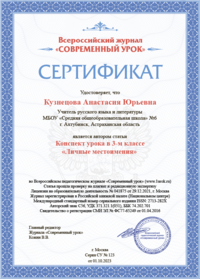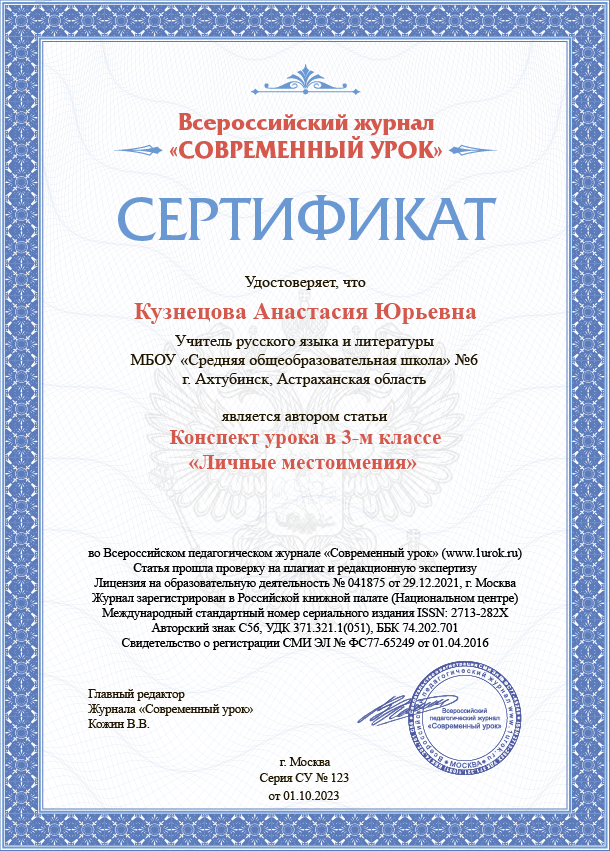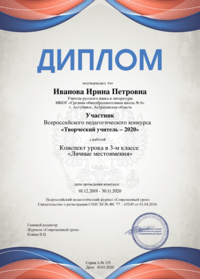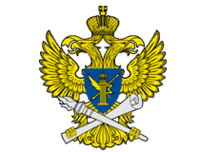Урок английского языка в 10 классе «National Parks and Nature Reserves in Russia»
Автор: Швыдова Елена Владимировна
Организация: МКОУ СОШ №11 п. Нового
Населенный пункт: Ставропольский край, п. Новый
(Unit 3 Step 5)
учебник линии УМК Афанасьевой О.В. , Михеевой И.В. , Барановой К.М.
«Rainbow English» 10 класс (базовый уровень)
Цель урока – практическое применение предметных знаний, умений, навыков по английскому языку.
Задачи:
1. Развитие навыков чтения с пониманием основного содержания текста.
2. Развитие речевых умений и навыков устной речи.
3. Развитие навыков аудирования с целью извлечения запрашиваемой информации.
4.Отработка грамматических навыков по теме «Использование артикля с географическими названиями.
5. Становление экологической культуры обучающихся.
Формирование УУД:
Личностные:
- формирование мотивации изучения иностранных языков;
- осознание возможностей самореализации средствами иностранного языка;
- развитие эмоциональной сферы - эстетического восприятия и оценки состояния окружающей среды.
Познавательные:
- самостоятельное выделение и формулирование познавательной задачи;
- поиск и выделение необходимой информации (при заполнении таблицы);
Регулятивные:
- постановка учебной задачи;
- определение последовательности промежуточных целей с учетом конечного результата;
- составление плана и последовательности действий;
- прогнозирование.
- рефлексия учебной деятельности.
Коммуникативные:
Участие в коллективном обсуждение проблем.
Оснащение: учебник линии УМК Афанасьевой О.В., Михеевой И.В. , Барановой К.М. «Rainbow English» 10 класс (базовый уровень), компьютеры, таблицы-шаблоны в формате Excel для выполнения практического задания.
Конспект урока:
1. Организационный момент. Этап мотивации и целеполагания
На доске – плакат с картинками животных и растений, занесенных в Красную книгу, с надписью надпись IN DANGE.
Good morning, boys and girls. Look at the poster. What are we going to talk about today?
Right. We will speak about endangered animals and plants and the ways of saving them – National Parks and Nature Reserves.
2.Этап актуализации знаний и умений.
2.1. Речевая зарядка
1. Do you think national parks and nature reserves help to save wildlife?
2. Why is it important to look after wild animals and plants?
3. Why are the animals and plants in danger?
4. What is the best way to protect animals: to keep them in the zoos or to let them live in wild in some special territories?
2.2. Развитие лексических навыков устной речи.
Let us find the difference between the National Parks and National Reserves. Read the definitions. What is the National Park? What is Nature Reserve?
- Give the definition of the national park and the nature reserves.
|
National park |
Nature reserves |
|
|
|
A. an area of land that is protected in order to keep safe the animals and plants that live there, often because they are rare
B. an area of a country that is protected by the government because of its natural beauty or because it has a special history
Here are some peculiar features of national parks and nature reserves. Fill the table.
1. economic activity is allowed
2. economic activity is not allowed
3. fishing, hunting, picking mushrooms and berries are prohibited
4. fishing, hunting, picking mushrooms and berries are allowed
5. building hotels is allowed
6. building roads is prohibited
7. tourism is allowed
8. some special scientific researches are provided
9. no plants and factories
10. plants and factories are built
11. agriculture is possible
12. agriculture is prohibited
13. cutting grass is prohibited
14. cutting grass is allowed
|
National park B |
Nature reserves A |
|
|
Ok. Now tell, what is the main difference between them. Do you know the names of some national parks and nature reserves in Russia.
(students’ answers)
To learn more about them let us read some texts.
2.3. Развитие навыков чтения.
Прочтите тексты (А-Е) и установите соответствие между их содержанием и утверждениями (1-6). Одно утверждение лишнее.
1. Here you can easily combine sea vacations and studying natural attractions.
2. Was mentioned in literature.
3. The oldest national park in Russia
4. Popular among climbers and tourists
5. Animals and birds from different climatic zones live together
6. Is situated between the river and the mountain chain
A. The national park Prielbrusye located in the region of Kabardino-Balkaria attracts a great amount of tourists. The main attraction is of course mountain Elbrus, one of the seven highest peaks of the world that is a dream of alpinists and skiers. People can also visit a unique place with springs of healthy mineral water - The Valley of Narzan. There are a lot of tourist routes on the slopes of Elbrus and Cheget Mountain. Local gorges and mountain passes are mentioned in legends and mystery stories.
B. The first Russia’s national parks, Losiny Ostrov (Elk Island) was created in 1983. It’s located to the north of Moscow and stretches deep into the Moscow Region. Beautiful coniferous and mixed forests and the valley of the Yauza River impress all the visitors. The park is the habitat of moose, sika deer, and wild boar. People visit it to spend weekends walking, riding bicycles, and of course looking at real elks.
C. The National Park Orlovskoye Polesye is famous for 200 head herd of the “Red List” European bisons. The park has an open-air reservation for bisons, bears, ostriches, and peacocks. Here pine forests of southern taiga prevail, where taiga and steppe species of birds and small mammals live side by side. According to legends, this is the place where Solovei the Brigand from the Russian fairy-tales used to live. These places were also described by I.S. Turgenev in his book “The Hunting Sketches”.
D. The national park in Sochi is one of the most popular among Russians. The park has been reintroducing Caucasian leopards to the region since 2007. Tourists can enjoy waterfalls, caves, and canyons, or swim in the warm Black Sea located at the foot of park’s snowy mountains.
E. The beauty of the National Parks Meshchyora was described by Soviet writer K.S Paustovsky in his book “Meshcherskaya Storona”. The park attracts fishermen and mushroom pickers. It has many ecological paths and river routes. At the territory of National Park Meshchyora there is a natural history complex with old 19 century buildings.
|
A |
B |
C |
D |
E |
|
|
|
|
|
|
2.4 Развитие грамматических навыков
Read about the most popular Russian national parks and natural reserves. Use the article where it is necessary.
Yes, they are the articles. Let’s revise the using the articles with geographical names.
1. The National Park Curonian Spit is shared both by _____Russia and ____ Lithuanian. It separates ___ Curonian Lagoon from ___ Baltic Sea.
2. The Kislovodsk National Park is one of the most beautiful places in _____ Stavropol Territory.
3. The National Park Buzuluksky Bor is situated in____ Eastern Russian Plain between ____Volga River and ___Ural Mountains.
4. In ___ Altai Mountains in the south of ___Siberia The Altai Natural Reserve is situated. The Altai Reserve includes the 30 km-long east bank of ___ Teletskoye.
5. The Kabardino-Balkarski Nature Reserve is situated in ___ Caucasus Mountains. It contains all of the mountains in ____Europe over 5,000 meters high.
6. The Baikal Nature Reserve is situated on the southeast shore of___ Lake Baikal, in southern ____Buryatia. It was established in 1969 for preserving the nature along the lake and the neighboring central part of _____ Khamar-Daban Range.
2.5. Развитие навыков аудирования.
Now let us visit one of the most interesting national reserves of Russia – Kronotsky Nature Reserve. Watch the video and fill the gaps.
https://youtu.be/nQXvCZCshHc
1. The Kronotsky Nature Reserve is situated in …
2. Kronotskoye Lake is the largest … water lake located here.
3. The lake covers the area of … sq km.
4. The maximum depth is … meters.
5. The lake appeared … years ago.
6. Sometimes the Kronotsky Volcano is compared with ….
7. The length of the Kronotskaya River is … km.
8. The river starts at the foot of the Kronotsky Volcano and flows into …
9. …, lynxes and otters live on the bank of the Kronotskaya River.
1. Kamchatka 2. Fresh 3. 247 sq km 4. 136 m 5. 12000 6. Fuji 7. 39 km 8. the Pacific Ocean 9. Bears
10. Рефлексия.
Our lesson is over. Did you like it? What facts were new and interesting for you? What national parks or nature reserves would you like to visit?
11. Домашнее задание.
You have received an e-mail letter from your English-speaking friend Tommy.
…I’ve got great news! I’ m going to take part in school ecological competitions about national parks of different countries. I have to make a project about one of them. Can you help me? I need some information about the National Park situated in your area. Where is it situated? What is its name? What is it famous for? What rare animals and birds live there? Are there any facilities for active holidays? What is the best season for visiting it?
Keep in touch,
Tommy
Write a message to Tommy and answer his questions. Write 120–150 words. Remember the rules of letter writing.
Источники информации:
1.https://youtu.be/nQXvCZCshHc
2.https://en.wikipedia.org/wiki/National_parks_of_Russia








